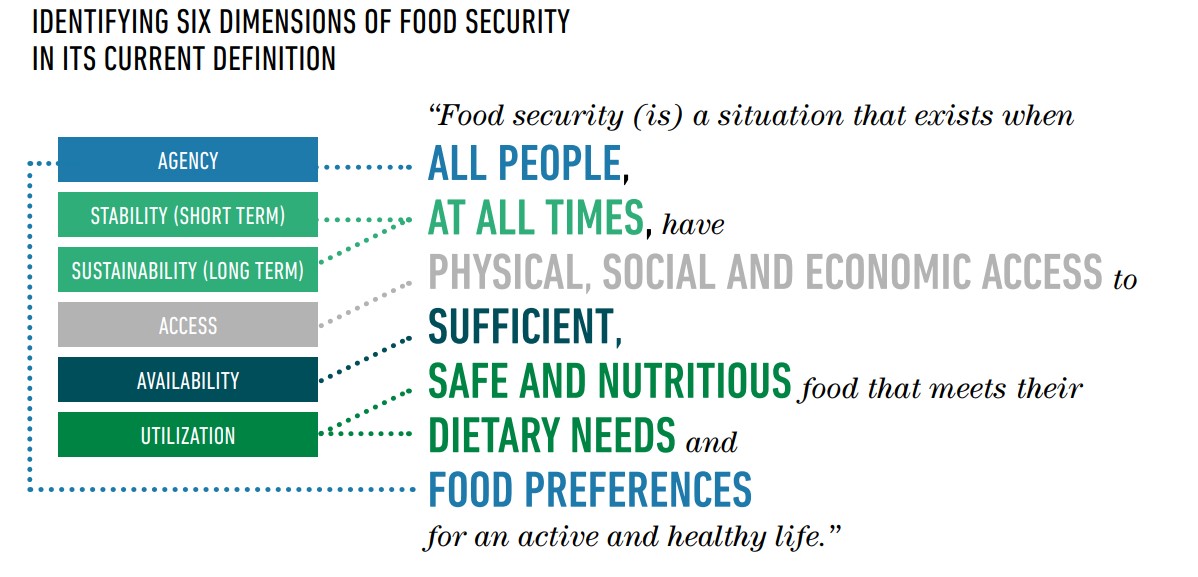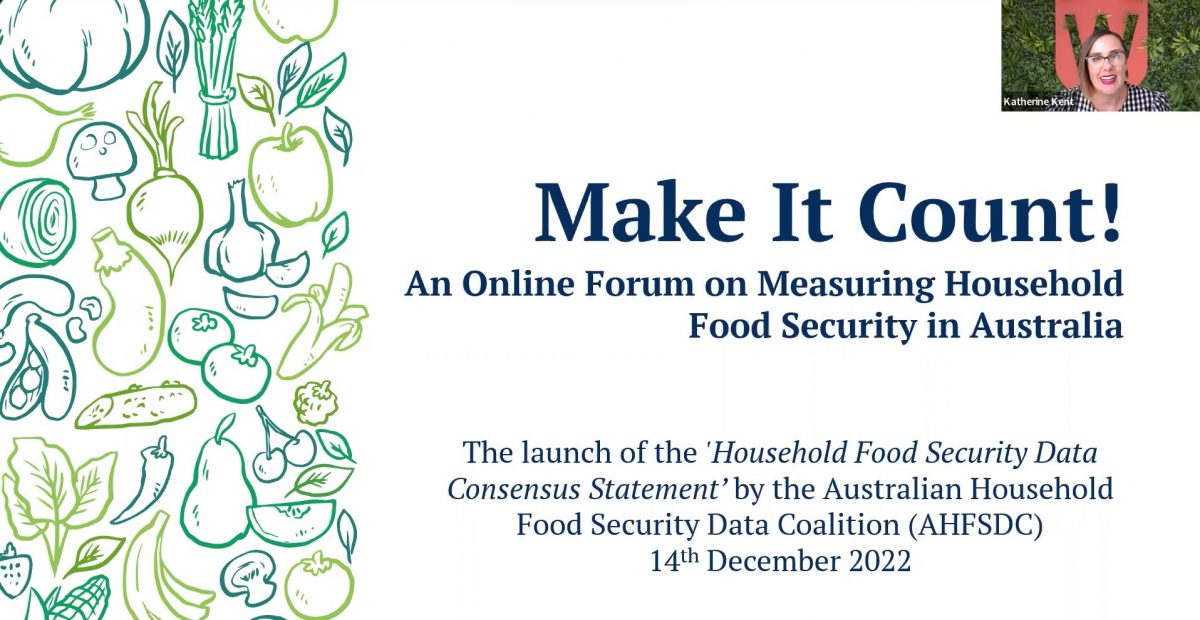Australia is often seen as a country with strong levels of food security, yet there is no consistent, nation-level measurement in place. So how can we know that we are a food secure nation?
In December the Australian Household Food Security Data Coalition (AHFSDC) launched the Food Security Data Consensus Statement to raise awareness of the need for improved monitoring on Australians facing food insecurity and advocate the use of a consistent tool.
Defining Food Security
It’s important to consider the various dimensions that underpin food security, as the issue can be more complex than it first appears. Food security is said to exist “when all people, at all times, have physical, social and economic access to sufficient, safe and nutritious food to meet their dietary needs and food preferences for an active and healthy life.” It captures the need to include everyone, to have stability and sustainability over time and for the food to sufficient, to be healthy and to enable agency of food choice, such as to support dietary or cultural requirements.

Food security also exists on a continuum, reflecting the severity at a point in time. A household can range from feeling full security regarding food needs, to experiencing levels of food anxiety, to having to reduce the quantity or quality of food, and to the most serious cases of skipping meals and going to bed hungry.

Measuring Food Security
The current data available on food security has various challenges causing difficulties in truly understanding the problem in Australia. The measurements can differ in definition, leading to inconsistent outputs and implications of the nature of food security, and the reporting is not sufficiently regular to support tracking of Australia progress in tackling the problem. This can cause confusion over the size and nature of food insecurity, which risks inaction – if you don’t know how bad an issue is, it’s hard to prioritise it against other issues. Also, we are left unable to properly compare to other nations to better judge ourselves.
AHFSDC is recommending Australia use the Household Food Security Survey Model, which asks households various questions relating to their experiences with food security. It covers restrictions on the quality and quantity of food, the frequency of any insecurity, and whether children in the household were impacted. Importantly, it is a commonly-used tool overseas and adoption within Australia would enable greater comparability internationally.
The Consensus Statement and Launch Seminar
To find out more on the fascinating and important topic, you can access AHFSDC’s Consensus Statement here.
A recording of the launch seminar is accessible here (Passcode: K?8A%QR3). The session provides a great background to the issue and details the food security measurement landscape, and the need for national approach.




